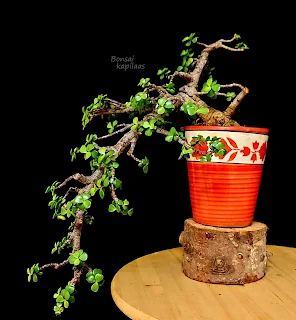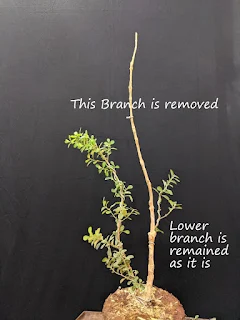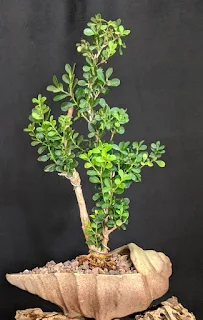Watering Schedule
A watering schedule
is very important for the plant's proper root growth Because when the roots are
healthy the plant will be healthy. Water contains oxygen and
hydrogen molecules. The supply of oxygen from vascular tissue to the whole
body of the plant depends on the moist level of the soil.
The watering schedule depends on many factors like
Species of the plant, Seasons of that
time, The region or country where the plant is growing, and The
ingredients used in Soil for proper drainage, the size of the Bonsai pot,
the health of the plant.
Species of Plants, if the plant is coniferous
like pine and evergreen plants growing in temperate temperatures need 2 to 3
times a week in the freshly repotted plants for two to three months. then once
a week to the plant. The moist level of humidity in weather in temperate
zones is high, so the water evaporation from the soil is very less. then
the plants won't need frequent watering.
The Bonsai soil also plays a big role in
holding water. If the soil is having well drainage and moisture-holding
capacity, once-a-day watering is needed in the Asian Tropical region. The
Tropical regions away from the coastal place are having dry weather. So the
frequency of watering is more because the dry and less humidity in weather
makes the soil dry quickly.
The Big Bonsais will be in big pots, and the
down portion of the soil will remain wet all day. The medium and mame Bonsai
are in small pots. they won't hold water for more time. Then the watering
schedule is different.
Just re-potted Bonsai plants need care
because lots of root cutting makes the plant weak. During that time moist soil
allows the plant to come out of the stress and gain energy to produce new
leaves and new roots.
The main factor of watering is there should
not be more water or less water.
The soil in the pot should be watered thoroughly without any dry places. Once
the plant is watered the extra water should come out of the drainage holes in a
few seconds.
To check the correct moisture level of the
soil in the pot, put a finger in the soil, if the soil is wet, there is no
need to water it. If the soil is dry water the plant. Once the plant is settled
in bonsai soil, allow the plant to dry out soil in between waterings. Water
is the main source of energy for the plant to grow happily.























































